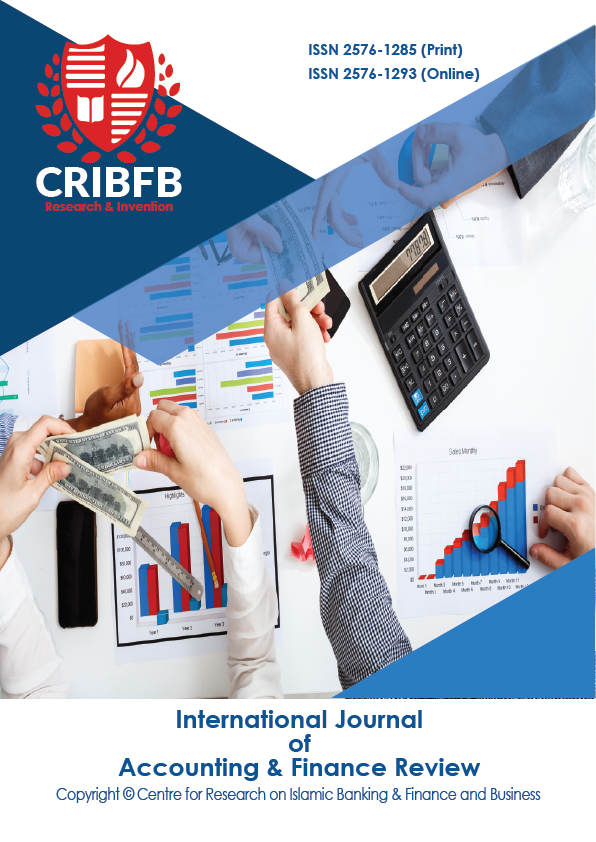THE IMPACT OF REGULATORY ACCOUNTING PROCEDURES ON THE U.S. SAVINGS AND LOAN CRISIS
Main Article Content
Abstract
This study explores the impact of regulatory accounting procedures (RAP) on the Savings and Loan industry during the 1980s. The Savings and Loan industry in the United States differs from commercial banks in that many of these entities are operated as cooperatives and focus on residential mortgages. Despite an increase in regulatory efforts in the 1980s, the S&L industry experienced significant failures and a lack of liquidity. Approximately one-third of the S&L entities failed during the years 1986 - 1995. This study explores multiple factors related to RAP and the S&L crisis. These factors include the voluntary adoption of RAP, organizational structure, and financial performance of the institutions. Data was collected on all S&L institutions in the state of Mississippi that were in operation as of the end of 1988. Utilizing stepwise regression this study finds that RAP was more likely to be adopted by S&L entities that operated under a mutual ownership structure when compared to S&Ls owned through stock. Results also show there was no economic benefit for those S&Ls that adopted RAP. Finally, Regulatory Net Worth was also found to be misstated in those entities that adopted RAP. The findings of this study suggest unintended consequences occurred regarding the adoption of RAP within the S&L industry.
JEL Classification Codes: G21, M41, M48.
Downloads
Article Details
Section
How to Cite
References
Avi-Yonah, R. (2017). International tax avoidance–Introduction. Accounting, Economics, and Law: A Convivium, 7(1). https://doi.org/10.1515/ael-2016-0071
Balderston, F. E. (1986). Thrifts in crisis: structural transformation of the savings and loan industry. Real Estate Economics, 14(1), 165-168. https://doi.org/10.1111/1540-6229.00377
Barth, J. R., Brumbaugh, R. D., Jr., Sauerhaft, D., & Wang, G. H. (1985). Insolvency and risk‐taking in the thrift industry: implications for the future. Contemporary Economic Policy, 3(5), 1-32. https://doi.org/10.1111/j.1465-7287.1985.tb00818.x
Beatty, A., & Liao, S. (2014). Financial accounting in the banking industry: A review of the empirical literature. Journal of Accounting and Economics, 58(2-3), 339-383. https://doi.org/10.1016/j.jacceco.2014.08.009
Benston, G. J. (1985). An analysis of the causes of savings and loan association failures. Salomon Brothers Center for the Study of Financial Institutions, Graduate School of Business Administration, New York University.
Brumbaugh, R. D., Jr., Carron, A. S., Jaffee, D. M., & Poole, W. (1987). Thrift industry crisis: Causes and solutions. Brookings Papers on Economic Activity, 1987(2), 349-388. https://doi.org/10.2307/2534486
Brumbaugh R. D., Jr. (1988). Thrifts under siege: restoring order to American banking. Ballinger.
Cahan, S. F., & Johnson, E. N. (1993). Were S&L financial statements misleading? Some evidence and policy prescriptions. Journal of Applied Business Research (JABR), 9(1), 1-9. https://doi.org/10.19030/jabr.v9i1.6088
Cole, R. A., & Eisenbeis, R. A. (1996). The role of principal‐agent conflicts in the 1980s thrift crisis. Real Estate Economics, 24(2), 195-218. https://doi.org/10.1111/1540-6229.00687
Cooperman, E. S., Wolfe, G. A., Verbrugge, J. A., & Lee, W. B. (1995). The 1985 Ohio S&L crisis: An examination of S&L stockholder wealth effects. Financial Review, 30(1), 61-82. https://doi.org/10.1111/j.1540-6288.1995.tb00825.x
Curry, T., & Shibut, L. (2000). The cost of the savings and loan crisis: Truth and consequences. FDIC Banking Rev., 13, 26.
Competitive Equality Banking Act 1987 H.R.27 - 100th Congress (1987-1988): Competitive Equality Banking Act of 1987. Retrieved from http://www.congress.gov/
Dye, R. A., Glover, J. C., & Sunder, S. (2015). Financial engineering and the arms race between accounting standard setters and preparers. Accounting Horizons, 29(2), 265-295. https://doi.org/10.2308/acch-50992
Friedrich, J., & Thiemann, M. (2021). The economic, legal and social dimension of regulatory arbitrage. Accounting, Economics, and Law: A Convivium, 11(2), 81-90. https://doi.org/10.1515/ael-2020-0150
Goldwasser, D. L. (1990). The liabilities ramifications of the S&L crisis. The CPA Journal, 60(1), 20.
Hill, J. W., & Ingram, R. W. (1989). Selection of GAAP or RAP in the savings and loan industry. Accounting Review, 667-679. Retrieved from https://www.jstor.org/stable/247854
Instructions for the Thrift Financial Report Industry Condition Report System. Federal Home Loan Bank Board, Washington, D.C., GPO, January 1989.
Kenton, W. (2021, July 30). Savings and loan (S&L) crisis. Investopedia. Retrieved from https://www.investopedia.com/terms/s/sl-crisis.asp
Klaeser, D. E. (1989). U.S. League of Savings Institutions, telephone interview, 7 September 1989.
Lileikienė, A., Obi, P., & Valackienė, A. (2021). An Examination of the Safety and Profitability of Eu and US Banks since Basel III. Journal of Management, 37(2).
Lilien, S., Mellman, M., & Pastena, V. (1988). Accounting changes: Successful versus unsuccessful firms. Accounting Review, 642-656. Retrieved from https://www.jstor.org/stable/247904
Margavio, G. W. (1993). The savings and loan debacle: The culmination of three decades of conflicting regulation, deregulation, and re-regulation. Accounting Historians Journal, 20(1), 1-32. https://doi.org/10.2308/0148-4184.20.1.1
Molloy, M. B., & Primoff, W. M. (1989). The S&L Crisis--putting things in perspective. The CPA Journal, 59(12), 12.
Obi, P., & Sil, S. (2015). A Conceptual Framework for Examining the Impact of Basel 2.5 on Market Risk Capital. Journal of Finance Issues, 14(1), 12-23. Retrieved from https://jfi.aof-mbaa.org/index.php/jfi/article/view/2290
Pizzo, S., Fricker, M., & Muolo, P. (1989). Inside Job: The Looting of America’s Savings and Loans. McGraw-Hill Publishing NY.
Steinreich, D. (2014). The savings and loan debacle twenty-five years later: A Misesian re-examination and final closing of the book. Quarterly Journal of Austrian Economics, 17(2), 154-178.
Tucker III, J. J., & Salam, A. W. (1994). Congress, regulators, RAP, and the savings and loan debacle. The CPA Journal, 64(1), 42.
United States League of Savings Institutions Federal Guide. (1989). Chicago, IL: Unites States League of Savings Institutions.




